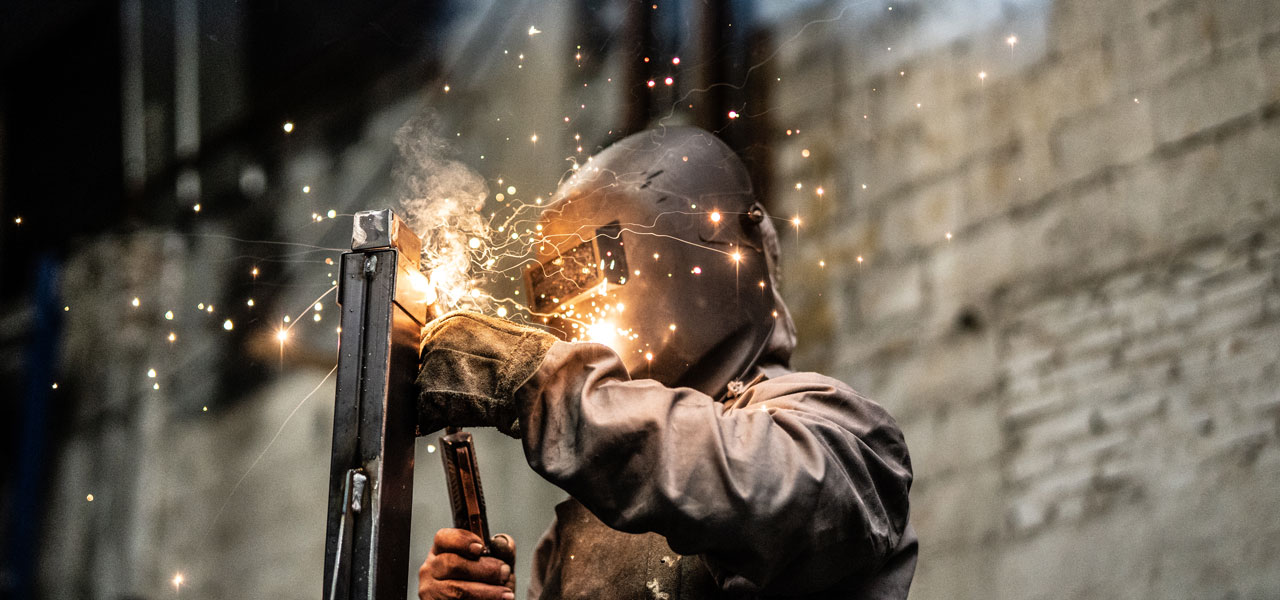A commercial property fire not only threatens lives but also a business’ assets and ability to continue operating. As an intermediary, you play an important role in helping clients manage their fire risk and set up a comprehensive fire safety management policy. A hot work permit system is one such safety feature that is crucial for businesses, especially those in the manufacturing industries.
What is hot work?
Hot work refers to the work associated with construction, demolition or maintenance activities that involve the use of portable gas and welding equipment for soldering, brazing, grinding, or any other similar activities that can produce open sparks, flame and heat.
It becomes a problem when hot work is executed in an unsafe and uncontrolled manner that can lead to devastating consequences, such as welding of a steel roof structure that results in sparks igniting combustible material, which in turn results in a large uncontrolled fire. Another major loss example is when unsafe hot work is carried out on roofs that have metal and combustible material such as timber trusses or waterproof layers that are combustible.
Hot work is one of the main causes of fire losses in commercial and industrial operations and has been recognised as a significant inception hazard for many years by both fire protection organisations, and the insurance industry.
How a Hot Work Permit Programme works
To properly control the hazard of cutting, welding and other hot work, your client must establish a comprehensive, Cutting – Welding – Hot Work Permit Programme. This programme is a formal (written) management control system that is intended to create a safe and controlled environment on the premises when any authorised hot work activity is carried out, where this work is related to maintenance, repairs or renovations. Any unauthorised hot work should be strictly forbidden as this will result in unsafe conditions that can eventually lead to a major fire.
Where hot work forms part of the normal day-to-day production/manufacturing activities of the business, e.g. the manufacturing of steel structures or steel components in a purpose built factory, then a hot work permit is not required for such day-to-day activities. However, it is still important to ensure that a controlled and well managed environment is maintained that is free of combustibles and flammables and has adequate fire protection, to avoid uncontrolled fires and ignition.
Each contractor, sub-contractor or maintenance employee performing hot work in an occupied building or in the open will need a Hot Work Permit. By applying a formal hot work programme, the potential of a fire loss to property as a result of hot work will be significantly reduced.
The programme should include the following elements:
- A management policy which clearly states when, where and under what conditions any type of hot work may be performed.
- Making someone responsible for managing the programme and having trained staff to implement the programme.
- Establishing a permit system whereby formal permission is obtained before the work is carried out.
- The formal permit must be signed, authorised and issued by the responsible person.
- Providing the necessary safety equipment.
- Establishing the competency requirement of the people who carry out the hot work.
The Cutting-Welding-Hot Work Permit is issued to the person who will be doing the hot work and is issued only after the responsible person(s) mentioned above has inspected the work area and observed the precautions which are stated in the permit. The permit should be in the possession of the welder during the work and immediately upon completion, it must be returned to the person who authorised the permit and signed off.
You must also remind clients that this permit should be filed for review by an insurer. The same permit system should be applied where such work is conducted by contractors. Every contractor working at a client’s facility should know the requirements for credentials, experience and adherence to a hot work programme and these requirements should be noted in any contract documents.
Precautionary measures businesses should take
The Fire Protection Association of South Africa (FPASA) has published a bulletin explaining the precautionary measures which should be observed before, during and after hot work operations. Work with your commercial industry clients to ensure that they have sufficient measures in place, and help them to set up a Hot Work Permit Programme if they don’t have one already.
For any questions about hot work and other fire risks, speak to us or contact your relationship manager. We have more articles on the dangers of fires in our dedicated intermediaries blog section, such as the importance of fire sprinkler systems.
